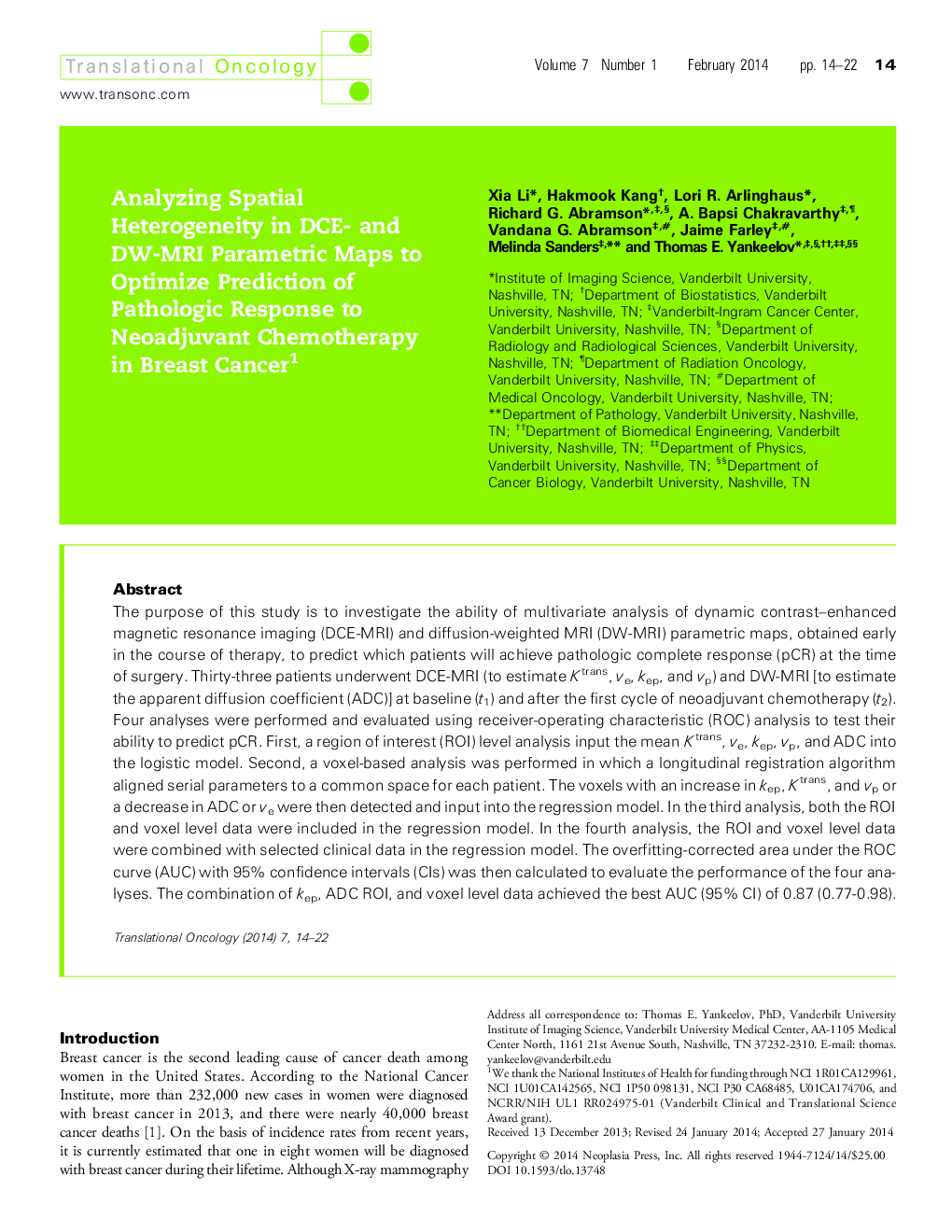| کد مقاله | کد نشریه | سال انتشار | مقاله انگلیسی | نسخه تمام متن |
|---|---|---|---|---|
| 2163420 | 1091425 | 2014 | 9 صفحه PDF | دانلود رایگان |

The purpose of this study is to investigate the ability of multivariate analysis of dynamic contrast-enhanced magnetic resonance imaging (DCE-MRI) and diffusion-weighted MRI (DW-MRI) parametric maps, obtained early in the course of therapy, to predict which patients will achieve pathologic complete response (pCR) at the time of surgery. Thirty-three patients underwent DCE-MRI (to estimate Ktrans, ve, kep, and vp) and DW-MRI [to estimate the apparent diffusion coefficient (ADC)] at baseline (t1) and after the first cycle of neoadjuvant chemotherapy (t2). Four analyses were performed and evaluated using receiver-operating characteristic (ROC) analysis to test their ability to predict pCR. First, a region of interest (ROI) level analysis input the mean Ktrans, ve, kep, vp, and ADC into the logistic model. Second, a voxel-based analysis was performed in which a longitudinal registration algorithm aligned serial parameters to a common space for each patient. The voxels with an increase in kep, Ktrans, and vp or a decrease in ADC or ve were then detected and input into the regression model. In the third analysis, both the ROI and voxel level data were included in the regression model. In the fourth analysis, the ROI and voxel level data were combined with selected clinical data in the regression model. The overfitting-corrected area under the ROC curve (AUC) with 95% confidence intervals (CIs) was then calculated to evaluate the performance of the four analyses. The combination of kep, ADC ROI, and voxel level data achieved the best AUC (95% CI) of 0.87 (0.77–0.98).
Journal: Translational Oncology - Volume 7, Issue 1, February 2014, Pages 14-22